#algonquin
Explore tagged Tumblr posts
Text
The Wend*go is Not Your Cryptid
I'm Algonquin/Ojibwe and this is a spirit that comes from our teachings.
As a young child, the elders taught me to never even SPEAK its name, to not even sing its songs. When we sang a song about it during drumming group one year, we all got in trouble.
You do not spell the word or speak the word.
It's NOT a "cryptid" or a "spooky story" for white people to appropriate.
Its bearly spoken about in our own communities, and even then, only very carefully.
Again, not because its "creepy" but because its respected and something in our traditions that is not played around with; so its certainly not for non-ojibwe/algonquin people to speak about whatsoever. Period.
15K notes
·
View notes
Text













Smoke Lake Cabin, Algonquin Park Forest, Ontario,
Courtesy: Anya Moryoussef Architect
#art#design#architecture#minimal#nature#interior design#interiors#minimalism#retreat#off-grid#somked#lake house#lake#cabin#millwork#ontario#sustainable architecture#algonquin#anya moryoussef
128 notes
·
View notes
Text

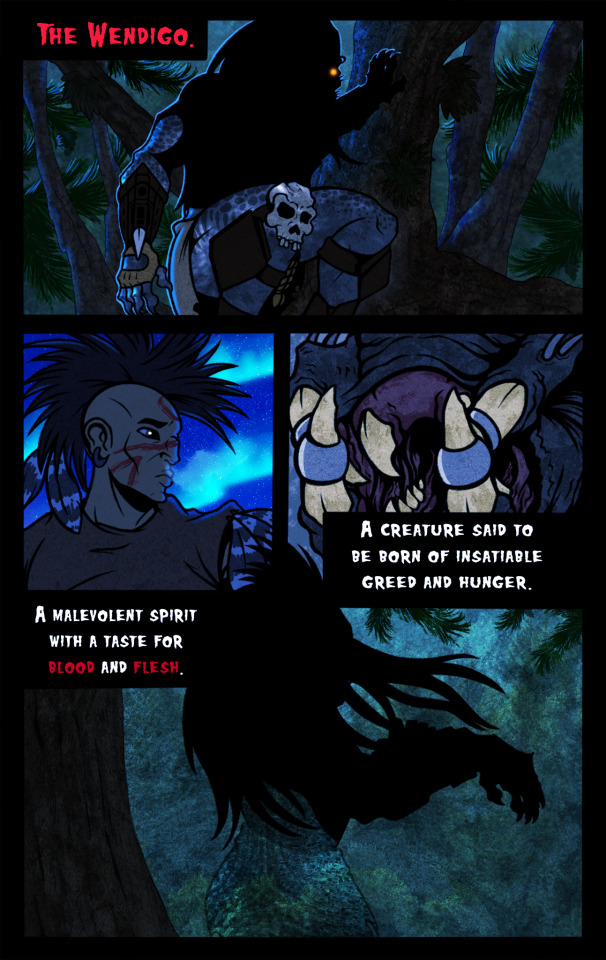
The Hunt... has begun.
It's here! It's here! Tales of the Hunt has officially started!
The beginning of our story dates back to 1562, in Eastern Canada. The Algonquin tribe are unaware that something is watching them from the trees. Something lurks in the dark and is ready to strike...
@kenosisofabrami and I are so excited to finally start sharing this story and bring it to life for all of you! We've been having an absolute blast working on this together so far and can't wait to bring more!
New pages will drop on Wednesdays! Stay tuned!
@kenosisofabrami did the amazing colors!
I did the lineart and storyboard :D
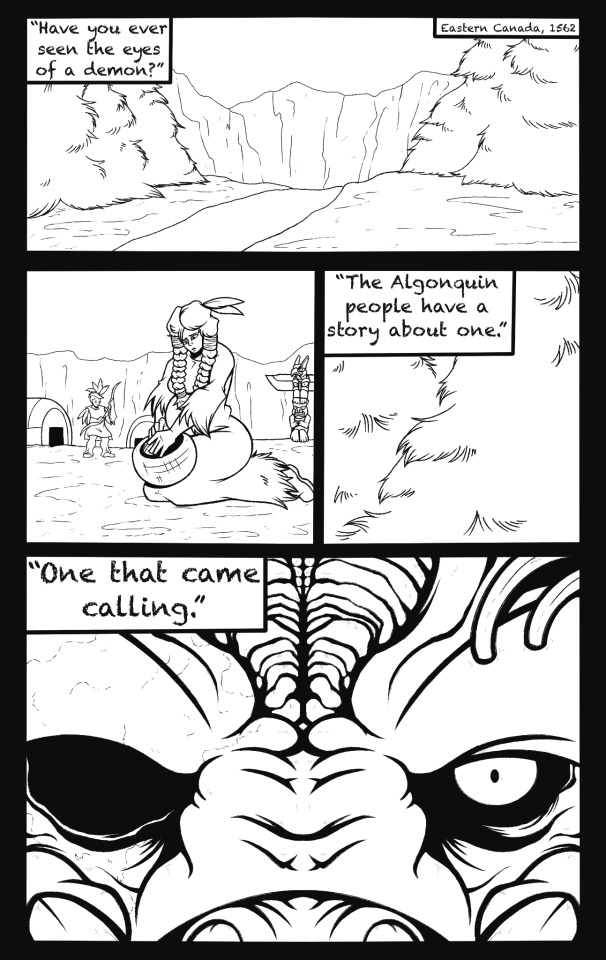

#predator#predator 2#predators#predators 2010#alien vs predator#prey#prey 2022#alien vs predator requiem#avp#avp requiem#super predator#yautja predator#yautja#yautja oc#yautja male#algonquin#native american#fan comic#comic art#comics#illustration#fanfic#collaboration#art collab#scifi#artists on tumblr#monster art
88 notes
·
View notes
Note
Wendigo/creepy deer Moodboard?









Get to the cabin!!
#livi’s moodboards#aesthetic#moodboards#moodboard#mythology#Algonquin#Algonquin mythology#native American#Native American mythology#deer#winter#woods#forest#snow#ice#creepy#horror#wendigo#windigo#trees#dark forest#nature#blue#black
36 notes
·
View notes
Text

49 notes
·
View notes
Text


Inktober 2024 no.10 - “Nomadic” 🛶
This one was inspired by Canadian friend of mine, who a member of the Algonquin tribe. I learned from her how Canadian natives differ from Americans with how the former is more nomadic due to the differing weather conditions and other factors. I’m simplifying, of course, but I hope I’ve done her heritage some justice.
#inktober#inktober2024#ink#inktoberday10#inktoberNomadic#pen and ink#traditional art#artwork#illustration#black and white#algonquin#Nomadic#canada#Nomad#Birch canoe#indigenous
19 notes
·
View notes
Text

8 notes
·
View notes
Text






Support Indigenous artists/creators right now if you can! These are all available right now at thatdeathgirl.com/crafty-kwes among lots of other stuff, go look around :)) If financial support is out of reach for you right now, like, comment, and share as much as you can! It will help our stuff get to more people, which is half the battle for small creators. Chi-miigwech <3
#indigenous#anishinaabe#mixed#indigenous heritage#indigenous art#ndn#anishinaabemowin#native#indigenous stories#n8v#algonquin#beadwork#indigenous beadwork#beaded jewelry#handmade#crafts#small artist#small business#artist#native art#indigenous culture#first nations
20 notes
·
View notes
Text
Please Hire Indigenous Sensitivity Readers
So I created an article that said, “Stop Using Slurs in Children's Stories” and one of the slurs I mentioned was the word “savage” and I used LJ Davies as an example of how many times someone can write that word in one book, let alone several books as a way to explain how this is a common slur used for a lot of writers. I also mentioned other authors, but after reading so many AI books, I decided to read LJ Davies's stand-alone book called “The Last Monster on Earth” which uses the word savage like it’s going out of style.

Everything was fine. I mentally sighed every time that word appeared, but I kept going. That was, until this word came out of nowhere and if you’re a part of the Algonquin-speaking tribes, you might already know why I stopped reading the moment it popped up...wendigo.
I shouldn’t have to explain why you shouldn’t use Wendigo’s as the “monsters” of your stories. I just want to talk about how you should really...please...for the love of all things holy, I’m on my knees, hire...indigenous...sensitivity...readers.
“The Last Monster on Earth” is a story about a human who gets turned into a “monster” (dragon) and is afraid of losing their humanity. That’s as far as I got, I don’t know what happens after chapter 3 because I stopped after the reveal of the Wendigo’s.
The trope of “turning into an animal and losing your humanity” is very old and was kind of founded on racism. People of colour were often considered monsters, animals, and barley even human. So when you create a story of turning into an animal where you’re losing your “humanity” or are afraid of losing it, it reinforces these negative stereotypes.
If you have a cool idea for a story it might be frustrating to hear someone like me to “ruin” it. But the thing is, I’m not trying to “ruin” anyone’s stories or prevent them from writing in the first place.
I want your story to be the best it can be, however, there are a lot of common writing tropes, myths, and monsters that come from Indigenous cultures and most of these tropes, myths, and monsters that you probably see today which are very common have deep-seated roots of racism.
Despite this article mentioning LJ Davies at the start, I want to make it clear I don’t think he’s a bad person just because he uses the word savage or wendigo in a story, but I do think it’s so common to see that word in media and to have wendigoes in horror stories where not a lot of people are aware of how harmful they are.
If you want to know more about them please seek out Algonquin-speaking tribes.
Is it frustrating to see these things pop up in everything? Yes, yes it is. However, I only think these things appear as often as they do because people are unaware of the harm or the history these words and monsters have.
A lot of this can be avoided by hiring one indigenous sensitivity reader, even if you don’t think you need it, there’s no harm in getting one. They can point things out to you and if you have questions they can help. Does your story need to use the word savage? Is there no other word you can think of to replace it? Does your story need to use a monster from a native culture that doesn't belong to you? Can you not make up your own? What’s the significance of stealing from another’s culture and butchering it?
A post-apocalyptic story where humans have vanished and the main character gets turned into a dragon with no memory is fine. Making the main character afraid they’re no longer “human”, not so much. Using the word savage repeatedly is uncomfortable. Using a monster from a culture you’re not a part of and people from said culture have repeatedly told you not to use is problematic.
I’m 6 months in this year and only finished reading 3 books while having to put down 9 and it’s because (besides AI) the stories I’m reading (and no hate on the authors), just have a lot of problematic tropes or languages where it makes reading stories uncomfortable and I’m tired. I love reading, I love stories, I just want to read a story where I don’t have to be reminded of problematic elements and I have to do mental gymnastics to figure out if this was an accident or on purpose. Regardless it makes reading very exhausting and I feel like a lot of the problems I have could be solved if people just hire sensitivity readers.
#writing#writeblr#book#books#writers on tumblr#writers#dragon#lj davies#The Last Monster on Earth#savage#wendigo#writing advice#creative writing#writer#on writing#writerscommunity#Algonquin#first nations#indigenous#indigenous writers#native american
22 notes
·
View notes
Text
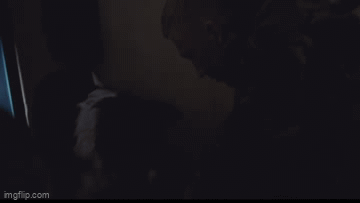
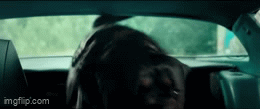
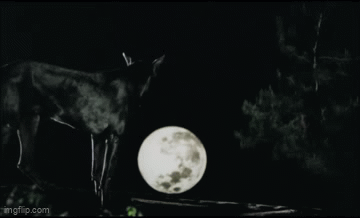
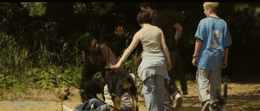
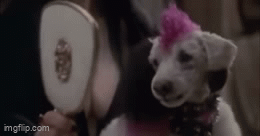
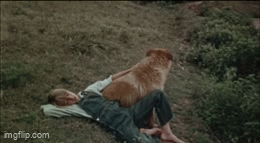
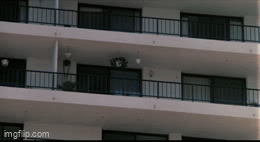
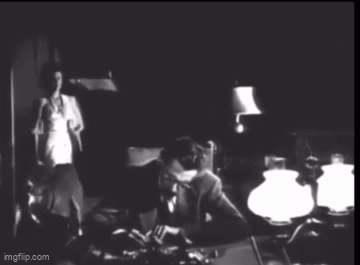
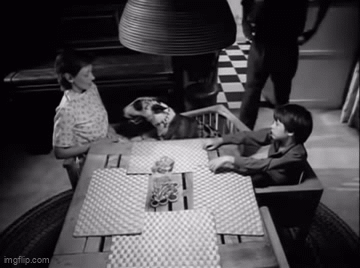
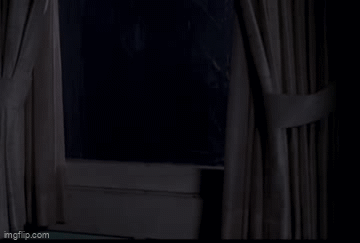
Dogs in horror part 3
Dog Soldiers 2002-Sam-Border Collie
Don’t Breathe 2016- Shadow- Rottweiler
Dracula’s Hound 1977-Zoltan- Doberman
Eden Lake 2008- Bonnie- Rottweiler
Elvira: Mistress of the Dark 1988-Algonquin- Toy Poodle
Encounter with the unknown 1972-Lady-Golden Retriever
Eyes of a Stranger 1981-?- Golden Retriever
Face of Marble 1946-Brutus-Great Dane
Frankenweenie 1984-Sparky-Bull Terrier
Friday the 13th: The Final Chapter 1984-Gordon- Golden Retriever
#dogs in horror#dog soldiers#Sam#border collie#don’t breathe#shadow#Rottweiler#draculas hound#zoltan#Doberman#Eden lake#Bonnie#elvira mistress of the dark#Algonquin#toy poodle#encounter with the unknown#lady#golden retriever#eyes of a stranger#face of marble#Brutus#Great Dane#frankenweenie#sparky#bull terrier#Friday the 13th the final chapter#Gordon
27 notes
·
View notes
Text
In Cinderella Tales From Around the World, I've now read all the tales from the United States and Canada. Most of these variants are Native American; some scholars think the archetype of Cinderella spread to these tribes from French Canadian settlers, but the indigenous people made it their own. There are also some US and Canadian variants from non-indigenous sources, which the book follows with two similar versions from the West Indies.
*The first Native American variant in this book is an Ojibwe version. The heroine is abused by her stepmother and two stepsisters, but a manitou (spirit) gives her fine clothes and a magical box in which to secretly store them. Some time later, the stepmother sends her to fetch water, and along the way the girl meets her grandmother, who warns her that she'll hear music, but not to look back in its direction – if she succeeds in not looking back, she'll become more beautiful than ever. She does, so one of the stepsisters sets out to the same place to gain new beauty too, but she ignores the grandmother's warning, looks back, and turns ugly. Some time after this, a dance takes place, the heroine attends wearing the dress the manitou gave her, and the chief's son falls in love with her and marries her. But after she gives birth to a son, the stepmother sticks a magic pin in her that turns her into an elk, and one of the stepsisters takes her place. Yet as in similar European variants, every day the elk comes back to nurse her baby, and eventually her husband finds her and pulls out the pin, restoring her to human form. He then has the stepmother and stepsisters executed.
*Another variant, from the Mi'kmaq and Algonquin peoples, is one I grew up with: it's been adapted into two picture books, The Rough-Face Girl and Sootface, and as "The Indian Cinderella" in an episode of the cartoon series Adventures from the Book of Virtues. The heroine lives with her father and her two cruel older sisters, who destroy her beauty by burning her with hot coals, singing off her hair and leaving her face covered with scars. Meanwhile, near their village lives a great, mystical chief or warrior who is invisible, or who can make himself invisible. Every girl in the village wants to marry him, including the two sisters, and they all dress in their finest to go and meet him. But the Invisible One will only marry a maiden who can see him, so his (visible) sister meets each one of them, and tests them by asking what his sled-strap and bowstring are made of. All the maidens, including the heroines' sisters, tell lies and are sent away. But the heroine dresses herself in improvised clothes and goes too, despite all her neighbors jeering at how ugly and shabby she looks. When the Invisible One's sister asks the usual question, she replies that his sled-strap is the rainbow and his bowstring is the Milky Way. This is the true answer. The sister then bathes her, which makes her hair grow back and heals her burn scars to reveal her natural beauty, and she marries the Invisible One.
**There's also a Huron variant on this story, with long additional episodes where suitors court the two older sisters, but they disdain the men, set near-impossible tasks for them, and when they succeed, finally say they'll marry them only when they've finished embroidering fabrics for the wedding. They force their younger sister to do the embroidery for them, but every night, like Penelope in The Odyssey, they undo some of it. Eventually, however, a great invisible chief comes to call, and the older sisters lie that they can see him but describe him inaccurately, while the youngest sister describes his true, otherworldly appearance and becomes his bride.
*The Zuñi tribe has a variant called The Turkey Girl, which stands apart from most others by having a sad ending. The heroine is a poor orphan, who either lives alone or with abusive sisters depending on the version, and earns her living by herding turkeys. One day a sacred dance is held and she longs to attend, so her turkeys magically wash her and dress her in finery and jewelry. But they warn her to come back before sunset to lead them home and feed them. The girl promises to do so, but at the dance she enjoys herself so much that she doesn't bother to go home in time. She comes back after dark to find that all the turkeys have fled into the wild, abandoning her to loneliness and poverty. This tale seems to be an allegory, warning poor people whose fortunes improve not to forget their old friends or be ungrateful to those who helped them.
*The book also includes retellings of Perrault's Cendrillon from Canada, the Southern US (written in slave dialect), the Bahamas, and Martinique. They're not different enough from from Perrault's version to warrant descriptions, but it's interesting to see the story told with each of these places' local flavors and dialects.
@ariel-seagull-wings, @adarkrainbow, @themousefromfantasyland
#cinderella#fairy tale#variations#cinderella tales from around the world#heidi anne heiner#native american#ojibwe#mi'kmaq#algonquin#zuni#french canadian#southern usa#african american#the west indies#the bahamas#martinique
26 notes
·
View notes
Text
seeing people utterly fucking abuse corn makes me feel like im going insane
PEOPLE WILL GET THREE DINKY LITTLE CORN PLANTS AT THE GARDEN STORE, BURY THEM IN LIFELESS POTTING SOIL AND THEN ACT SURPRISED WHEN THEY START STRUGGLING
LIKE DUDE

DUDE

DUDE

CORN WAS NEVER A SOLITARY PLANT
IT'S BEEN CAREFULLY BRED AND DOMESTICATED OVER THOUSANDS OF YEARS TO HAVE A SYMBIOTIC RELATIONSHIP WITH ITS SISTERS AND YOU ARE DEPRIVING IT OF THAT AND THEN ACTING SURPRISED WHEN IT CANT GROW
PLEASE. IM BEGGING YOU. IM ON MY FUCKING KNEES. YOU HAVE COLONIST BRAINWORMS. STOP IT WITH THE MONOCULTURES.
PLANT SOME FUCKING BEANS AND SQUASH!!!!
AND STOP PLANTING THEM SO CLOSE TOGETHER.
#if you are indigenous please god add to this and i will reblog it with your input#also im gonna reblog with the more practical side of it since it's so much more than throwing seeds in a hole#three sisters#haudenosaunee#algonquin#cherokee#seneca#like so many first nations have dome this for thousands of years and we just act like corn can be grown in giant fields#i dont wanna culturally appropriate but it feels so weird how we take these plants that have been domesticated for thousands of years#and just seperate them#chopping what may as well be a composite organism into three pieces#three sisters should be standard agricultural practice#this isn't fucking past history or archeological knowledge this is HERE and NOW#gardening
15 notes
·
View notes
Text


One of the pit stops along the sled trails
5 notes
·
View notes
Text
The thunderbird is a legendary creature in particular North American indigenous peoples' history and culture. It is considered a supernatural being of power and strength.
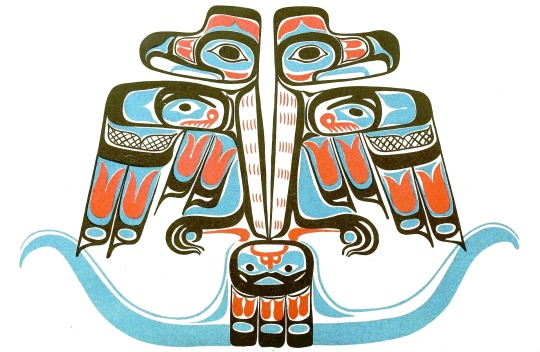
It is especially important and frequently depicted in the art, songs, and oral histories of many Pacific Northwest Coast cultures, but is also found in various forms among some peoples of the American Southwest, East Coast of the United States, Great Lakes, and Great Plains. In modern times it has achieved notoriety as a purported cryptid, similar to creatures such as Bigfoot��and the Loch Ness Monster.
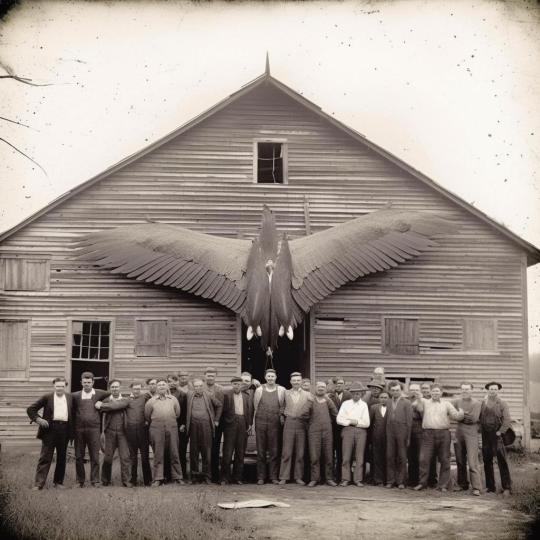
The thunderbird is said to create thunder by flapping its wings (Algonquian), and lightning by flashing its eyes (Algonquian, Iroquois).

In Algonquian images, an X-shaped thunderbird is often used to depict the thunderbird with its wings alongside its body and the head facing forwards instead of in profile.

The depiction may be stylized and simplified. A headless X-shaped thunderbird was found on an Ojibwe midewiwin disc dating to 1250–1400 CE. In an 18th-century manuscript (a "daybook" ledger) written by the namesake grandson of Governor Matthew Mayhew, the thunderbird pictograms varies from "recognizable birds to simply an incised X".
42 notes
·
View notes
Text

53 notes
·
View notes
Text

Taxidermied Great Blue Heron (left) and American Bittern (right) in the backrooms of the Algonquin Visitor's Centre. I always thought that bitterns were the same size as herons so seeing the two side-by-side was shocking.
3 notes
·
View notes